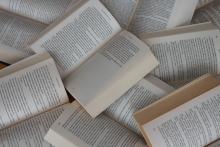Transforming to address new challenges
The integrated science approach to the humanities and arts is most evident in the rise of digital humanities. This new and by definition interdisciplinary and strongly international subfield is spearheaded by the UL Institute of Literature, Folklore and Art, the National Library of Latvia, and the UL Institute of Mathematics and Computer Sciences, which is a historical centre for computational linguistics. The first training programmes for digital humanities have been launched, such as a master’s programme at RTU.
The digital humanities are bringing quantitative methods back into the field of humanities research and are enabling a variety of opportunities for the public to participate in the research process. Companies such as Tilde, which is the leader in language technology in Latvia, are also successfully using the new opportunities for business, while at the same time creating a feedback loop with the world of science. The joint efforts of several government agencies have resulted in the machine translation system hugo.lv receiving international awards.
The next wave of integrative change is heralded by the emergence of the environmental humanities. The first national projects in this sub-field have already been launched and the very first scientific conference took place in 2018.
In the field of arts, the boundaries between research and creative practices are becoming more and more blurred. This is largely due to the opportunities that new technologies and media provide for creativity. In this regard, both Liepaja University and the non-governmental art, science, and culture innovation network RIXC are developing promising contemporary media art centres. Similarly, thanks to the efforts of many researchers, artists and entrepreneurs, design is slowly evolving from being a simple craft skill into a varied way of thinking.

